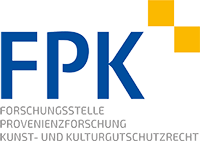„Exotische Kunst“ in Deutschland
Händler, Kritiker, Sammler und Spekulanten im ersten Drittel des 20. Jahrhunderts
Identifier (Artikel)
Abstract
The Hamburger Museum für Völkerkunde financed Leo Frobenius three large expeditions to Africa for 165.000 Marks. In late 1906, Frobenius’ aggressive collecting strategy brought the museum into financial troubles. With the help of generous loans from Hamburg businessmen, the then-museum director Georg Thilenius managed to fulfill his financial obligations towards Frobenius by pawning the recently in the Congo acquired collection. Starting in 1905-1906, the interest of artists of the Fauves, cubists and the Brücke in African and Oceanic art lead to a paradigm shift in its perception on the art market. Based on innovative exhibition concepts in Budapest, Prague and Hagen, German gallerists and auctioneers sought to succeed in the trade with non-European art and to develop new business models by applying different strategies. They benefited from colonial trade structures and a close network to Paris art dealers like Paul Guillaume or Joseph Brummer who in 1915 financed the book Negerplastik (Negro Sculpture) by Carl Einstein as an advertising effort. The climax of this development was reached in 1930 with the auctioning of Czech writer Joe Hloucha’s collection in Berlin and the sale of the Mosse collection’s Benin bronzes in 1934.
Keywords: Carl Einstein; Alfred Flechtheim; Otto Feldmann; Benin Bronzes; extra-European art
Statistiken

Lizenz

Dieses Werk steht unter der Lizenz Creative Commons Namensnennung - Weitergabe unter gleichen Bedingungen 4.0 International.







